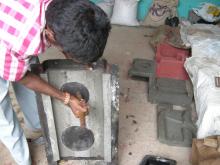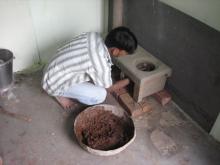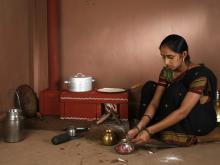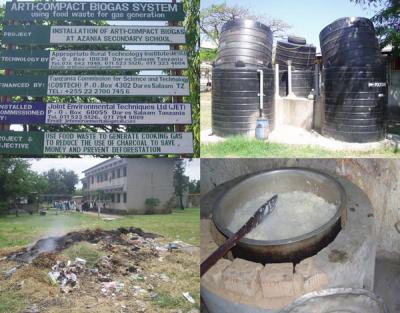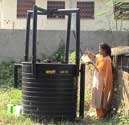Two Days at the Appropriate Rural Technology Institute Field Research Station in Phaltan, India
Working with Hemant Mahajan (ARTI Engineer, with the white cap) to demonstrate charcoal production using Top-Down pyrolysis and off-gas combustion. ( Nov 28-29, 2000)
Alex English english@kingston.net
Having come all the way to India to present a paper on this topic (Preliminary Tests on Charcoal Making-
Pyrolysis Gas Burners) it seemed appropriate to at least try and demonstrate the concept. So after the conference I spent two quick days in Phaltan, building, modifying and trying out a oil drum charcoal maker modeled after one I built back in Canada three years ago.

This shows the mostly full drum of cotton stalks. This trial did not work so we moved on to a denser fuel, bamboo.

Here the drum full of vertically packed bamboo is ignited on top. The drum has a few dozen small holes in the bottom for
primary air to promote the partial combustion, or pyrolysis of the bamboo. During startup no air is allowed into the drum from
below. The fire on top needs to be burning over the whole surface. Then a small hole is dug in the dirt at the bottom of the drum to allow some air up through the bamboo to the fire on top. This increases the fire intensity and causes the fire to move down into the bamboo below the top. After five or ten minutes the burner can be placed on top.

With the burner placed on top the flames are extinguished and the bamboo smoulders or pyrolyses. Notice the small opening in the dirt at the bottom of the drum.


